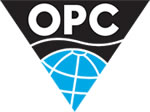Europe / Caspian / CIS
Country profile: Afghanistan
| Location: | Southern Asia, north and west of Pakistan, east of Iran |
| Climate: | arid to semiarid; cold winters and hot summers |
| Terrain: | mostly rugged mountains; plains in north and southwest |
| Size: | 647500 sq. km total (Land area: 647500 sq. km ) |
| Population: | 32,738,376 |
| Languages: | Afghan Persian or Dari (official) 50%, Pashto (official) 35%, Turkic languages (primarily Uzbek and Turkmen) 11%, 30 minor languages (primarily Balochi and Pashai) 4%, much bilingualism |
| Government: | Islamic republic |
| Capital city: | Kabul |
| Legal system: | based on mixed civil and Shari'a law; has not accepted compulsory ICJ jurisdiction |
| Currency: | afghani (AFA) |
| Licensing: |
Country profile
Afghanistan now has a democratically elected government. After winning an election, President Hamid Karzai, who had previously served on an interim basis, was officially inaugurated on October 9, 2004. The members of the National Assembly were elected in September 2005 and took office in December 2005. In 2001, a U.S.-led coalition had defeated the previous Taliban government, which had provided sanctuary in Afghanistan for the terrorist group al-Qaeda. After more than two decades of war and chaos, and three years of drought in the late 1990s, Afghanistan's primarily agricultural economy was in poor condition at the end of 2001, at the time the Taliban was removed from power. Since then, there has been marked improvement. For the Afghan fiscal year, which ran from March 21, 2004 to March 20, 2005, the GDP growth was 8 percent. Foreign aid has been helpful to Afghanistan, and pledges of assistance now total almost $15 billion. In March 2004, President Karzai urged foreign donors at a conference in Berlin to renew their commitments to Afghanistan, while presenting the donors with a $28 billion, 7-year economic development program. Karzai also urged the 50 countries attending the Berlin conference to help him prevent Afghanistan from becoming a "haven for drugs and terrorists."
In December 2003, the U.S. government reported that opium was growing in 28 of Afghanistan's 32 provinces, with poppy cultivation rising from 30,700 hectares to 61,000 hectares in one year. The International Monetary Fund (IMF) estimates that 40 to 60 percent of Afghanistan's gross domestic product (GDP) derives from trade in opium. In achieving the recent progress, Afghanistan has tried to overcome various problems. Until the duly elected National Assembly took office December 2005, the government was still transitional and it had limited authority in much of the country. The new government has to deal with continuing problems of lawlessness and the persistence of rival regional power centers. The national army is still relatively weak, but it is improving. The country's infrastructure also remains in poor condition. Foreign aid has helped repair some roads, but much more work is needed. Many of the electricity and telephone lines are still inoperable. On December 28, 2003, the Salang Tunnel linking northern and southern Afghanistan was reopened, while the main highway link between Kabul and Kandahar (alternative spelling, "Qandahar") was restored on December 16, 2003, cutting travel time between the two cities from two days to just five hours. On December 23, 2003, the World Bank approved a $95 million plan for rural reconstruction activities as part of Afghanistan's National Solidarity Program. The World Bank has also provided a total of $153 million under the Emergency Transport Rehabilitation Project. It is estimated that Afghans living outside the country had invested $3 billion in Afghanistan (out of an economy with GDP of around $6-$7 billion).
The government has been pushing financial sector and customs reforms, along with a plan to promote private investment in the energy sector. In September 2002, Afghanistan replaced its currency. "Old Afghani" notes were exchanged in for "New Afghani" notes, at a ratio of 100-to-1. This move was intended to give credibility to a currency which was so devalued that it had become nearly worthless. Use of U.S. dollars or neighboring countries' currencies is still common for many transactions in Afghanistan.
Energy production and consumption
| Oil | Gas | |
| Production: | 19 million cu m (2005 est.) | |
| Consumption: | 5,000 bbl/day (2005 est.) | 19 million cu m (2005 est.) |
| Exports: | ||
| Imports: | 4,120 bbl/day (2005 est.) | |
| Reserves: | ||
| Major fields: |
Other countries in this region
- Albania,
- Armenia,
- Austria,
- Azerbaijan,
- Belarus,
- Belgium,
- Bosnia and Herzegovina,
- Bulgaria,
- Croatia,
- Cyprus,
- Czech Republic,
- Denmark,
- Estonia,
- Faroe Islands,
- Finland,
- France,
- Georgia,
- Germany,
- Greece,
- Greenland,
- Hungary,
- Iceland,
- Ireland,
- Italy,
- Kazakhstan,
- Kyrgyzstan,
- Latvia,
- Lithuania,
- Luxembourg,
- Malta,
- Moldova,
- Montenegro,
- Netherlands,
- Norway,
- Poland,
- Portugal,
- Romania,
- Russia,
- Serbia,
- Slovakia,
- Slovenia,
- Spain,
- Sweden,
- Switzerland,
- Tajikistan,
- Tatarstan,
- Turkey,
- Turkmenistan,
- Ukraine,
- United Kingdom,
- Uzbekistan












